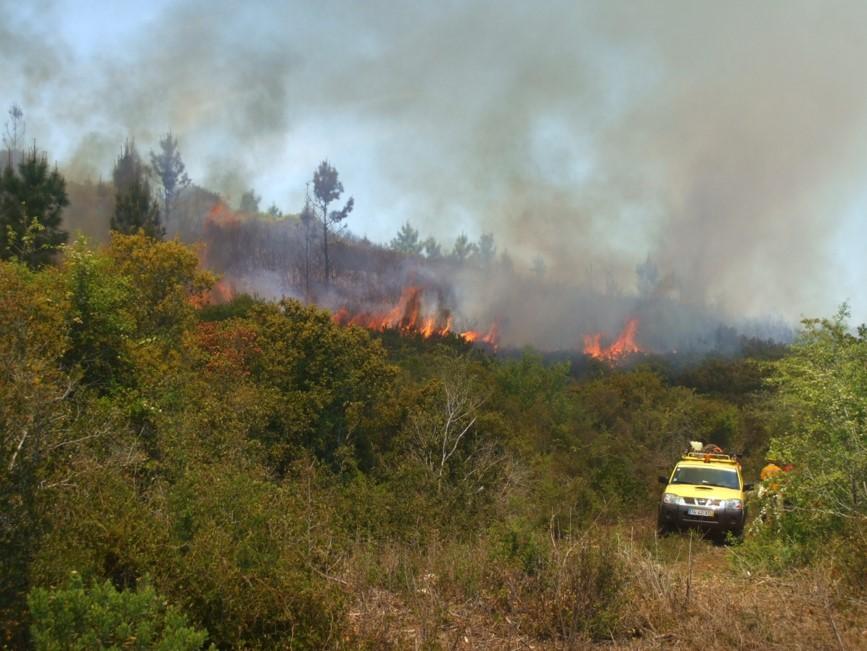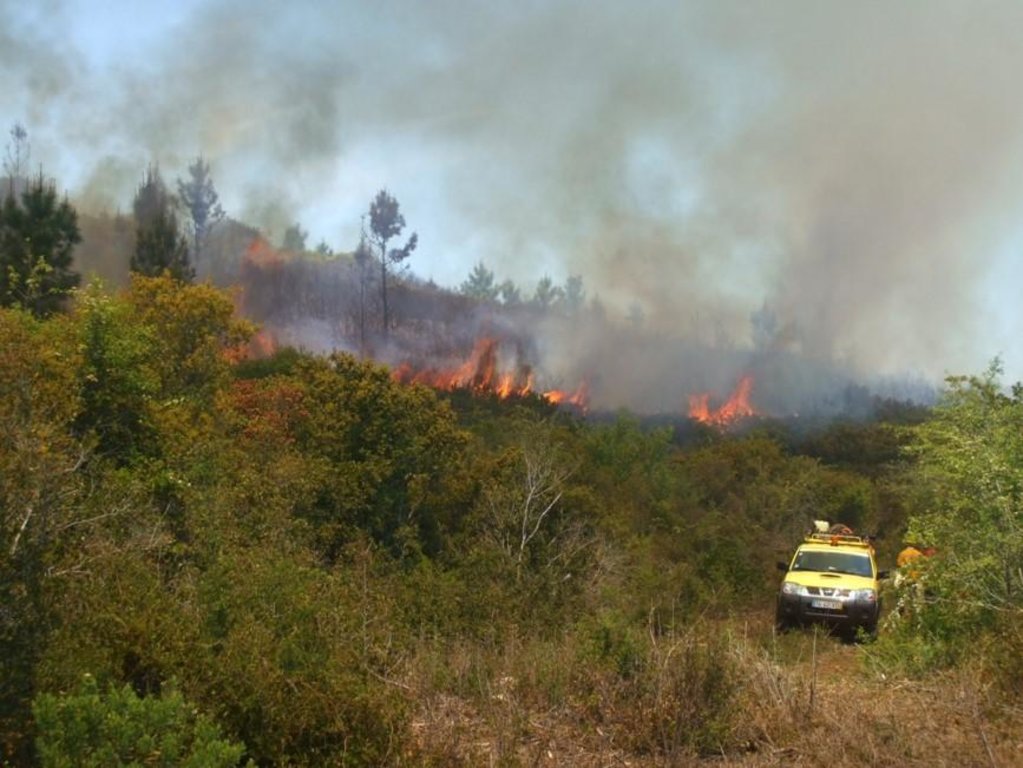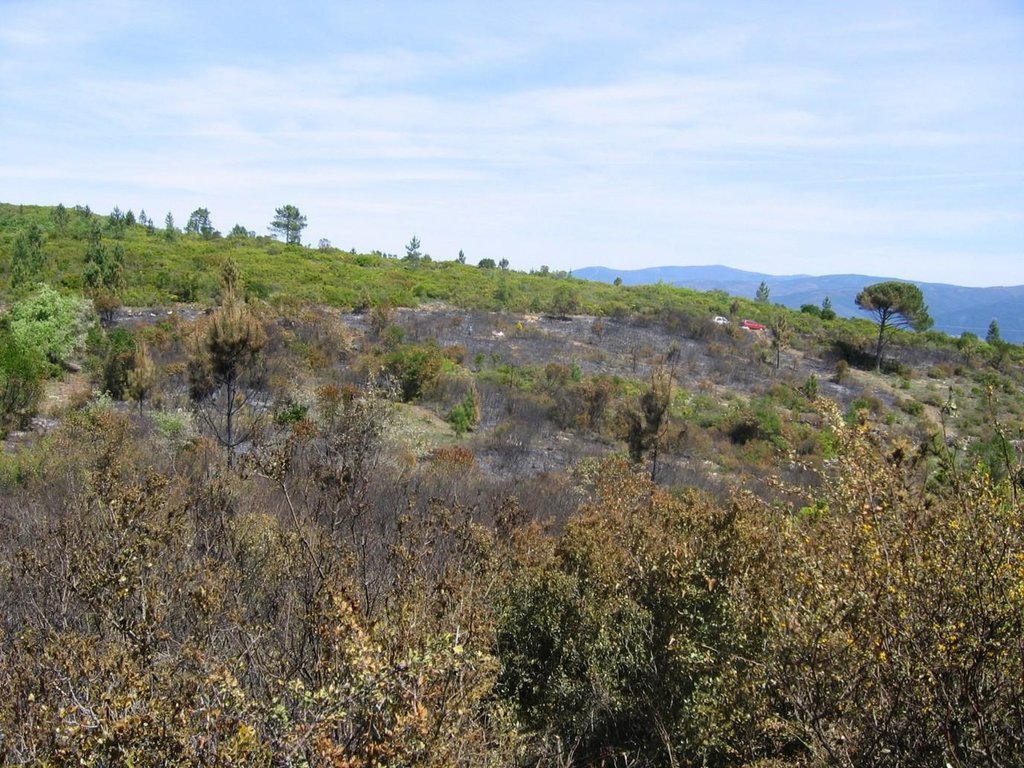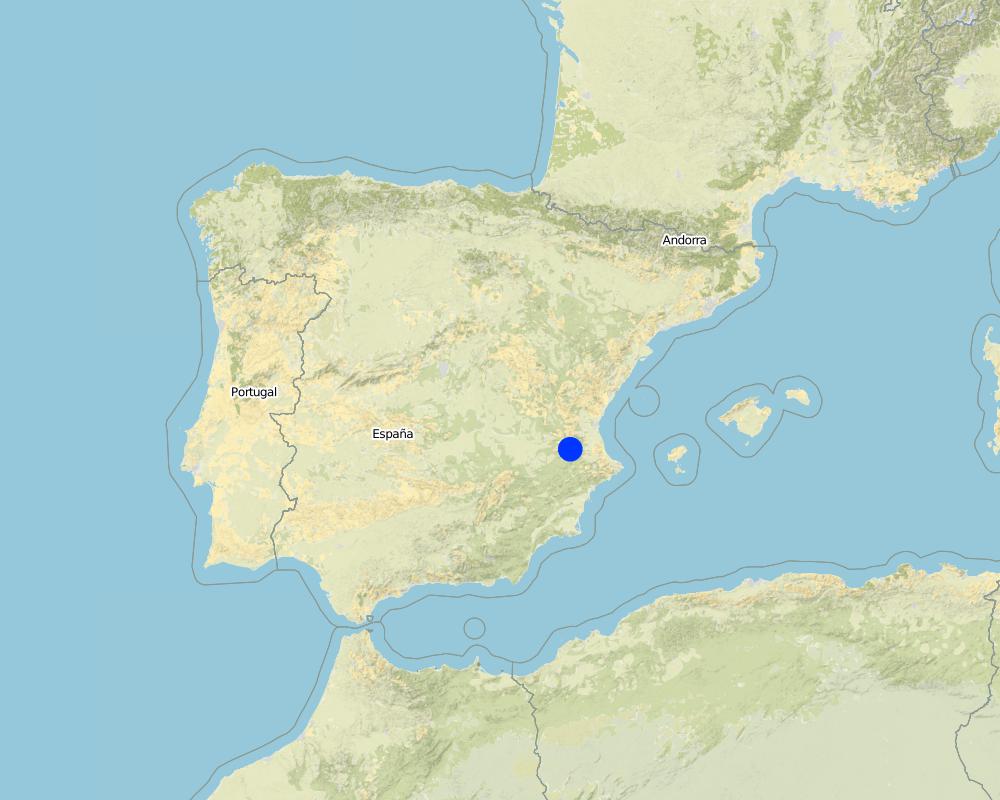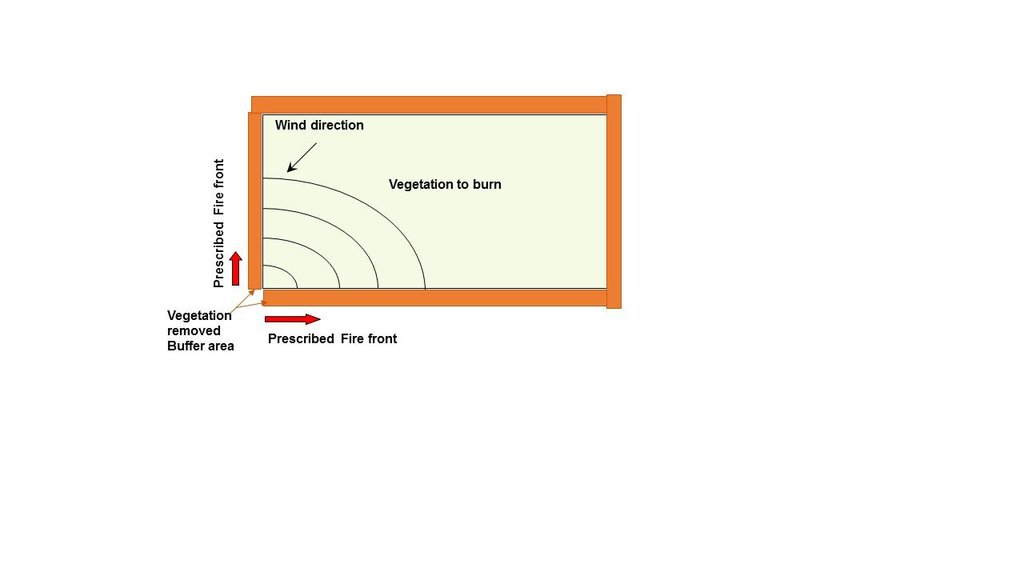Prescribed fire [西班牙]
- 创建:
- 更新:
- 编制者: Artemi Cerda
- 编辑者: –
- 审查者: Fabian Ottiger, Alexandra Gavilano
Fuegos prescritos (Spanish)
technologies_1679 - 西班牙
查看章节
全部展开 全部收起1. 一般信息
1.2 参与该技术评估和文件编制的资源人员和机构的联系方式
有助于对技术进行记录/评估的机构名称(如相关)
Universidad de Valencia (Universidad de Valencia) - 西班牙1.3 关于使用通过WOCAT记录的数据的条件
(现场)数据是什么时候汇编的?:
06/03/2014
编制者和关键资源人员接受有关使用通过WOCAT记录数据的条件。:
是
1.4 所述技术的可持续性声明
这里所描述的技术在土地退化方面是否存在问题,导致无法被认为是一种可持续的土地管理技术?:
否
2. SLM技术的说明
2.1 技术简介
技术定义:
Prescribed burns are considered as the intentional ignition of grass, shrub, or forest fuels for specific purposes according to predetermined conditions. Its objectives are fuel reduction, regeneration of plant species, and control of diseases.
2.2 技术的详细说明
说明:
Prescribed fires as a management tool is planned to be set up in shrubland areas of the Caroig mountain range, Valencia.
Purpose of the Technology: Main purpose is reduce fuel load that increases fire risk hazard in the area.
The research team of the University of Valencia will implement an experiment based on the sediment fences technique to capture and measure post-fire soil losses in a landscape burned by the prescribed fire technique.
Establishment / maintenance activities and inputs: Climate (less than 30 meter/second wind speed, less than 30 Celsius degree, and air moisture higher than 30%) and vegetation conditions must to be reached for the prescribed fire application.
The delimitation and removing vegetation around the burned area must be achieved in order to reduce fire spread.
Natural / human environment: The Aleppo pine trees in the region are typically planted as monoculture for wood production. The landscape reflects a long history of intense land management, with a mosaic of (semi-) natural and man-made agricultural (terraces), shrublands and afforested lands. Since the 1970´s, however, wildfires have increased dramatically in frequency and extent, driven primarily by socio-economic changes.
2.3 技术照片
2.5 已应用该技术的、本评估所涵盖的国家/地区/地点
国家:
西班牙
区域/州/省:
Spain
有关地点的进一步说明:
Valencia
Map
×3. SLM技术的分类
3.2 应用该技术的当前土地利用类型

森林/林地
植树造林:
- 单一栽培的本地品种
- Aleppo pine trees
产品和服务:
- 木材
- 薪材
- 水果和坚果
- 其它森林产品
- 放牧/啃牧
- 自然保持/保护
- 娱乐/旅游
- 自然灾害防护
注释:
Major land use problems (compiler’s opinion): When wildfire, it is expected a runoff and soil erosion increase, resulting in a decrease of on-site fertility and derived off-site effects such as loss of water quality, reservoirs water volume storage, higher risk of flooding and human beings damage. The prescribed fire application will help to reduce fire risk hazard.
Major land use problems (land users’ perception): Loss of wood resources.
Plantation forestry: Aleppo pine plantation
3.3 有关土地利用的更多信息
每年的生长季节数:
- 1
具体说明:
Longest growing period in days: 180
3.4 该技术所属的SLM组
- 天然和半天然森林管理
- 森林种植管理
- 减少基于生态系统的灾害风险
3.5 技术传播
具体说明该技术的分布:
- 均匀地分布在一个区域
如果该技术均匀地分布在一个区域上,请注明覆盖的大致区域。:
- < 0.1 平方千米(10 公顷)
注释:
Prescribed fires as a tool to manage forest fuel load and reduce fire risk hazard.
3.6 包含该技术的可持续土地管理措施

植物措施
- V3:植被的清理
注释:
Main measures: vegetative measures
3.7 该技术强调的主要土地退化类型

生物性退化
- Bf:火灾的有害影响
注释:
Main type of degradation addressed: Bf: detrimental effects of fires
Main causes of degradation: deforestation / removal of natural vegetation (incl. forest fires) (Afforestation monoculture of pine species, lead the environment to a high fire risk.), droughts (Summer droughts in mediterranean areas increase fire risk.), population pressure (depopulation leads to land abandonment and thus increase of fire risk)
3.8 防止、减少或恢复土地退化
具体数量名该技术与土地退化有关的目标:
- 防止土地退化
注释:
Main goals: prevention of land degradation
4. 技术规范、实施活动、投入和成本
4.1 该技术的技术图纸
作者:
González-Pelayo, Oscar, University of Valencia. Dept. of Geography. Blasco Ibañes, 28, 46010, Valencia, Spain
4.2 技术规范/技术图纸说明
Delimitation of the area to be burnt is the first step. Then, a buffer area where vegetation is removed is mandatory. Opposite to wind direction and slope, the prescribed fire must to be applied.
Location: Ayora. Valencia, Spain
Date: 06-03-2014
Technical knowledge required for field staff / advisors: high (To develop Prescribed fires, it is needed a high quality formation for this purpose.)
Technical knowledge required for land users: moderate
Main technical functions: control of fires, reduction of dry material (fuel for wildfires)
Vegetative measure: Prescribed fire
Vegetative material: T : trees / shrubs
Vegetative measure: Vegetative material: T : trees / shrubs
Vegetative measure: Vegetative material: T : trees / shrubs
Vegetative measure: Vegetative material: T : trees / shrubs
5. 自然和人文环境
5.1 气候
年降雨量
- < 250毫米
- 251-500毫米
- 501-750毫米
- 751-1,000毫米
- 1,001-1,500毫米
- 1,501-2,000毫米
- 2,001-3,000毫米
- 3,001-4,000毫米
- > 4,000毫米
有关降雨的规范/注释:
Mediterranean climate with concentred precipitation in february-may and september-december months. Drought from june to september
农业气候带
- 半湿润
- 半干旱
Thermal climate class: temperate (transition zone between semiarid and subhumid)
5.2 地形
平均坡度:
- 水平(0-2%)
- 缓降(3-5%)
- 平缓(6-10%)
- 滚坡(11-15%)
- 崎岖(16-30%)
- 陡峭(31-60%)
- 非常陡峭(>60%)
地形:
- 高原/平原
- 山脊
- 山坡
- 山地斜坡
- 麓坡
- 谷底
垂直分布带:
- 0-100 m a.s.l.
- 101-500 m a.s.l.
- 501-1,000 m a.s.l.
- 1,001-1,500 m a.s.l.
- 1,501-2,000 m a.s.l.
- 2,001-2,500 m a.s.l.
- 2,501-3,000 m a.s.l.
- 3,001-4,000 m a.s.l.
- > 4,000 m a.s.l.
说明该技术是否专门应用于:
- 不相关
关于地形的注释和进一步规范:
Altitudinal zone: 501-1000 m a.s.l. (650-700 meters)
Slopes on average: Rolling (11-15%) (Maximum angle on which the technology could be applied)
5.3 土壤
平均土层深度:
- 非常浅(0-20厘米)
- 浅(21-50厘米)
- 中等深度(51-80厘米)
- 深(81-120厘米)
- 非常深(> 120厘米)
土壤质地(表土):
- 中粒(壤土、粉土)
表土有机质:
- 高(>3%)
如有可能,附上完整的土壤描述或具体说明可用的信息,例如土壤类型、土壤酸碱度、阳离子交换能力、氮、盐度等。:
Soil depth on average: very shallow (leptosols) and shallow (Cambisols)
Soil fertility is medium
Soil drainage/infiltration is medium
Soil water storage capacity is high
5.4 水资源可用性和质量
地下水位表:
5-50米
地表水的可用性:
匮乏/没有
水质(未处理):
仅供农业使用(灌溉)
5.5 生物多样性
物种多样性:
- 中等
5.7 应用该技术的土地使用者拥有或租用的平均土地面积
- < 0.5 公顷
- 0.5-1 公顷
- 1-2 公顷
- 2-5公顷
- 5-15公顷
- 15-50公顷
- 50-100公顷
- 100-500公顷
- 500-1,000公顷
- 1,000-10,000公顷
- > 10,000公顷
5.8 土地所有权、土地使用权和水使用权
土地所有权:
- 州
土地使用权:
- 自由进入(无组织)
5.9 进入服务和基础设施的通道
健康:
- 贫瘠
- 适度的
- 好
教育:
- 贫瘠
- 适度的
- 好
技术援助:
- 贫瘠
- 适度的
- 好
就业(例如非农):
- 贫瘠
- 适度的
- 好
市场:
- 贫瘠
- 适度的
- 好
能源:
- 贫瘠
- 适度的
- 好
道路和交通:
- 贫瘠
- 适度的
- 好
饮用水和卫生设施:
- 贫瘠
- 适度的
- 好
金融服务:
- 贫瘠
- 适度的
- 好
6. 影响和结论性说明
6.1 该技术的现场影响
社会经济效应
生产
木材生产
生态影响
土壤
土壤流失
生物多样性:植被、动物
植物多样性
减少气候和灾害风险
火灾风险
6.2 该技术的场外影响已经显现
下游洪水
6.7 该技术的优点/长处/机会
| 土地使用者眼中的长处/优势/机会 |
|---|
| Reduce fire risk. |
| 编制者或其他关键资源人员认为的长处/优势/机会 |
|---|
|
Prescribed fire technique allows to reduce fire risk hazard in forest plantations, increase diversity through introduction of local species. How can they be sustained / enhanced? It could be enhanced by the pre selection of areas in a mosaic pattern that are suitable to be burned by the prescribed fire technique. |
6.8 技术的弱点/缺点/风险及其克服方法
| 土地使用者认为的弱点/缺点/风险 | 如何克服它们? |
|---|---|
| Lack of vegetation, aesthetic reasons |
| 编制者或其他关键资源人员认为的弱点/缺点/风险 | 如何克服它们? |
|---|---|
| Good prescribed fire practises has no disadvantages since fire is part of the mediterranean ecosystem. |
链接和模块
全部展开 全部收起链接
无链接
模块
无模块


